|
 |
Nikon
Nikkor
MF
Lenses
|
|
|
|
|
|
Photographic Hardware Index
Nikon Rangefinder Film Cameras Nikon Manual
Focus SLR Film Cameras Nikon Auto Focus SLR
Film Cameras Nikon SLR AF Digital Cameras
Nikon Manual Focus Lenses Nikon Auto Focus
Lenses Nikon Flashes (Speedlights)
Nikon Camera and Lens Accessories |
|
|
Nikon -
Arguably the greatest camera lens manufacturer of
all time!
This section is dedicated to manual focus Nikkor lenses marketed by Nikon over the
decades. Lens design and coatings have changed over
time and the F mount has which superseded the "S"
mount, also changed over time to
allow improved data transmission to the camera body.
Nikon always tries to retain a backwardly compatible
solution whenever possible and has achieved a
greater success in this endeavour than any other
manufacturer with over 400+ different lens types
using the F bayonet mount.
When Nikon launched the Nikon F camera and
matching lenses in 1959 the aperture setting was
transmitted to the light meter using Nikon's
distinctive prong (bunny ears) which engaged with a
pin on the camera/meter, this was effective but a
little slow to align, in consequence Nikon developed
an alternative system named
AI (Automatic maximum aperture Indexing) which
utilised a meter coupling ridge on the aperture
ring, it was first used on the Nikon F2A and Nikon
F2AS in 1977. "Bunny ears" remained for backward
compatibility and a conversion service was offered
for existing Nikkor lenses achieved by replacing the
lens's aperture ring. |
|
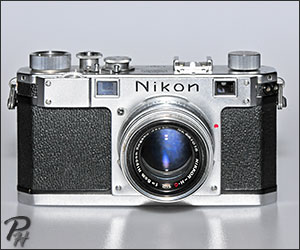 |
|
|
Nikkor S
lenses
The Nikon Range finder cameras used the Nikon S
mount and a range of matching Nikkor lenses, all the
lenses were single coated although only some are
marked with a red "C" to denote this fact as a
marketing strategy. The only multi-coated lenses
produced for Nikon Rangefinder cameras were those
produced for the 2000 and 2006 Anniversary cameras
and are compatible with the original cameras. |
|
|
 |
Nikkor S
lenses
(1945 to late 1960's 21mm to 50mm) |
|
Lens |
Elements |
Colour |
Date |
Lens |
Elements |
Colour |
Date |
| 21mm f4.0
"Q" |
8 |
Blk |
1959 |
25mm f4.0
"W" |
4 |
Blk/Chr |
1953 |
| 28mm f3.5
"W" |
6 |
Blk/Chr |
1952 |
35mm f3.5"W" |
4 |
Blk/Chr |
1948 |
| 35mm f2.5
"W" |
6 |
Blk/Chr |
1952 |
35mm f1.8 "W" |
7 |
Blk |
1956 |
| 35mm Stereo |
4 |
Chr |
1956 |
50mm f3.5 Micro |
5 |
Chr |
1956 |
| 50mm f3.5
"Q" |
4 |
Chr |
1945 |
50mm f2.0 "H" coll |
6 |
Chr |
1946 |
| 50mm f2.0
"H" |
6 |
Blk/Chr |
1950 |
50mm f1.5 "S" |
7 |
Chr |
1950 |
| 50mm f1.4
"S" oly |
7 |
Blk/Chr |
1950 |
50mm f1.4 "S" |
7 |
Blk |
1954 |
| 50mm f1.1
"N" int |
9 |
Blk |
1956 |
50mm f1.1 "N" ext |
9 |
Blk |
1959 |
|
|
|
 |
Nikkor S
lenses
(1948 to late 1960's 85mm to 1000mm & 2000-2006
lenses) |
|
Lens |
Elements |
Colour |
Date |
Lens |
Elements |
Colour |
Date |
| 85mm f2.0
"P" |
5 |
Blk/Chr |
1948 |
85mm f1.5
"S" |
7 |
Blk |
1951 |
| 105mm f4.0
"T" |
3 |
Blk |
1959 |
105mm f2.5
"P" |
7 |
Blk |
1953 |
| 135mm f4.0
"Q" |
4 |
Chr |
1947 |
135mm f4.0
"Q" |
4 (Bel) |
Blk |
1958 |
| 135mm f3.5
"Q" |
4 |
Blk/Chr |
1956 |
135mm f3.5
"Q" |
4 |
Blk |
1950 |
| 180mm f2.5
"H" |
6 |
Blk |
1953 |
250mm f4.0
"Q" |
4 |
Blk |
1951 |
| 250mm f4.0
"Q" |
4 |
Blk |
1956 |
350mm f4.5
"T" |
3 |
Blk |
1959 |
| 500mm f5.0
"T" |
3 |
Blk |
1952 |
1000mm f6.3
Rflx |
3 |
Blk |
1959 |
| 50mm f1.4 MC |
7 |
Blk |
2000 |
35mm f1.8 MC |
7 |
Blk |
2006 |
|
|
|
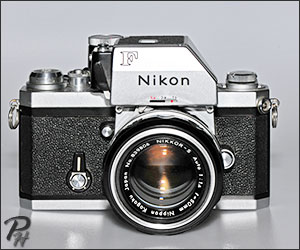 |
Auto Nikkor F
lenses
(1959 to 1974)
These lenses usually had optics which had a single
coating and the focusing ring was all metal
and scalloped to help the photographers grip. Auto
referred to the lens remaining at full aperture
until the moment of exposure at which time the lens
automatically stopped down.
The number of lens elements used was marked on the
lens using a simple letter code: T=3
Q=4 P=5 H=6 S=7
O=8 N=9 UD=11 QD=14
PD=15
From 1971 some lenses had multi coating and were
marked with a "C" to indicate this fact, these are
preferable for colour photography use. |
|
|
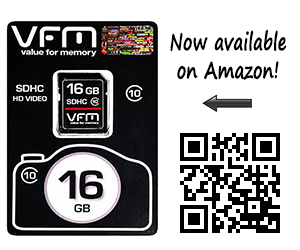 |
Nikkor K
series (1974 to 1977)
K series lenses are all multicoated and so are not
marked with a "C" or a letter to designate the
number of lens elements. The focusing ring was fitted
with a rubber grip ring. Although these lenses still
relied on the Nikon "bunny ears" to communicate
aperture information Nikon altered many lenses to AI
for pre 1977 camera compatibility as an after
service for it's customers.
Fitting unconverted K lenses to newer cameras can
cause damage to the cameras AI aperture coupling
system and is not recommended, there are a few
exceptions such as the F2AS, F2A, FE and FM - their
AI coupling can be hinged out of the way on these
cameras. |
|
|
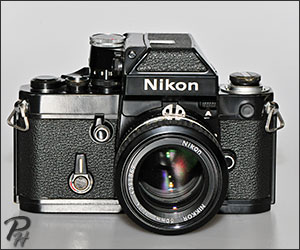 |
|
Nikkor AI
lenses (1977 to 1983)
AI lenses were not need until Nikon introduced
cameras using this aperture coupling system in 1977
but were added earlier to lenses once they new they would
be used on future cameras.
A re-engineered aperture ring had a
large part of the ring removed leaving a ridge to
connect to the cameras AI coupling and a protrusion
to indicate maximum lens aperture.
Thin stainless steel "bunny ears" were
retained on nearly all manual focus Nikon lenses to enable the latest lenses to be
fully backwardly compatible with all Nikon's
previous 35mm SLR range of cameras, light
holes were introduced to the "Bunny ears" to illuminate
a new second aperture
scale in the latest ADR (Aperture Direct Readout)
camera viewfinders. |
|
|
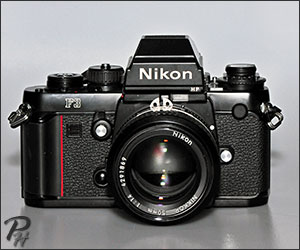 |
|
Nikkor AI-S
lenses (1983 to now)
The introduction
of the Nikon FA in 1983 represented a milestone in
light measurement and exposure calculation as it used the
revolutionary matrix system, AI-S was necessary to
inform the metering system
of the focal length of the lens fitted, a radial
cut-out on the rear of the lens's mount also
communicated to the
cameras metering system that the lens diaphragm is
linear and can be used in shutter speed priority
mode. AI-S was ok but could only represent a fixed
focal length and so on a zoom lens the greater the zoom range the greater the potential
error from the AI-S set focal length, this problem
was only resolved later with the introduction of
electronic contacts on AF cameras. AI-S data was
only used by the Nikon FA, F3O1, F501 and F4 bodies. |
|
|
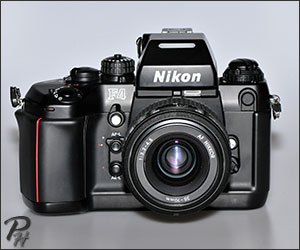 |
|
Nikon AF lenses
All of Nikons
Auto Focus lenses apart from two produced
specifically for the F3AF camera are AI-S for
backward compatibility, however "G" type lenses have
no aperture ring and DX lenses are unable to expose
the whole of a 35mm frame as they are designed for a
relatively small sensor, although they may fit
neither of these lens types will realize the full
potential of a manual focus Nikon film camera. |
|
|
|
|
|
 |
Photographic
Hardware
|
|
|
|
|
|